Western heat wave lingers as California counts ‘hidden costs’ of extreme heat
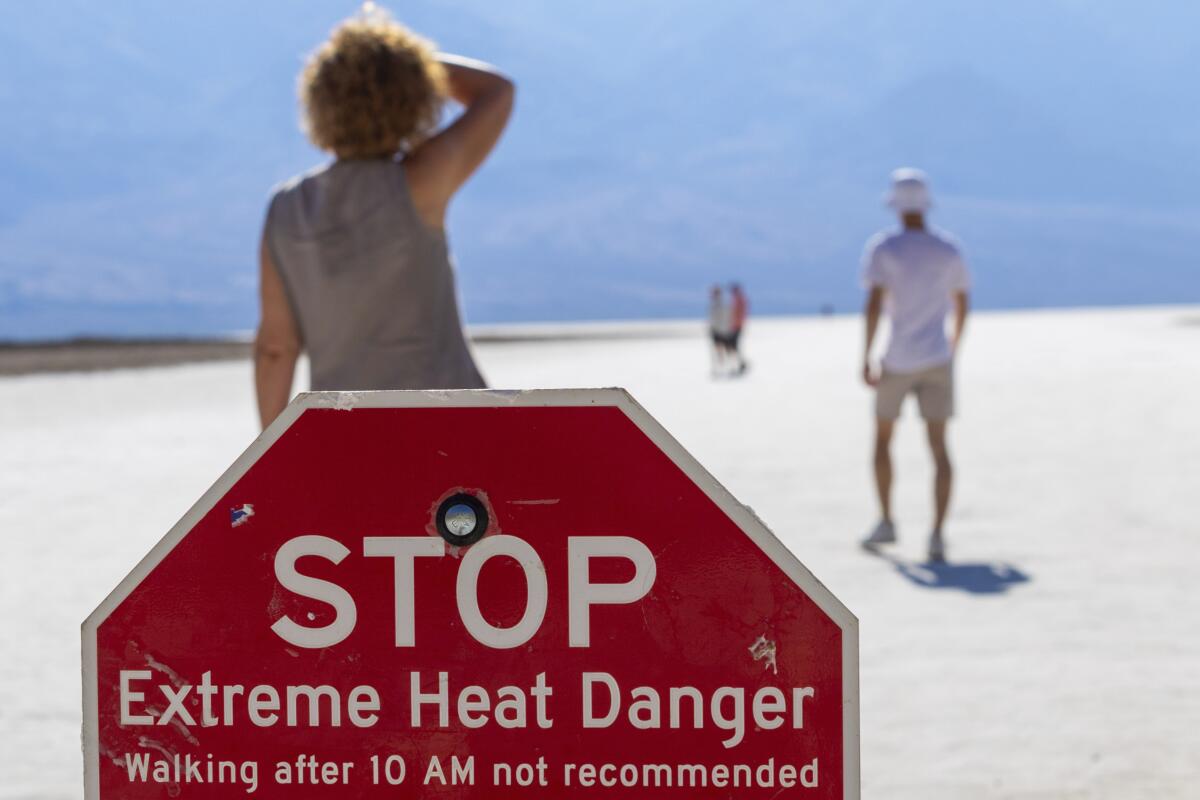
- Share via
Good morning. It’s Tuesday, July 9. Here’s what you need to know to start your day.
- Heat wave brings death, fires and all-time highs.
- How Beverly Hills became an unlikely battleground for the future of abortion rights.
- More people should be eating steak sandwiches at this bar.
- And here’s today’s e-newspaper
You're reading the Essential California newsletter
Our reporters guide you through our biggest news, features and recommendations every morning
You may occasionally receive promotional content from the Los Angeles Times.
California heat wave won’t be letting up this week
This prolonged, early-summer heat wave is doing a number on California and other Western states. Dangerous, triple-digit temperatures have shattered records and the heat is being blamed for several deaths.
How much longer will it linger?
The National Weather Service has issued excessive heat warnings across much of the state this week. Some in Southern California are currently running until late Thursday, but many in effect for the inland valleys and deserts run until Saturday night.
“Extreme heat has become the nation’s deadliest weather-related hazard,” Times reporter Grace Toohey wrote Monday. “The National Weather Service … has continued to beef up its warning systems to encourage people, especially vulnerable populations, to take precautions.”
Amid this record-shattering heat wave, the state released a first-of-its-kind report that seeks to quantify the full, often hidden costs that extreme heat causes in the Golden State. Looking at seven heat events in California over a 10-year period, researchers found that heat killed nearly 460 people, hospitalized more than 5,000 and cost $7.7 billion overall.
Before we get further into that, let’s look at how our current extreme heat event is affecting Californians.
Multiple daily and all-time temperature records have been broken across the West
Those include:
- 124 degrees in Palm Springs (all-time record);
- 120 in Las Vegas (all-time record);
- 119 in Redding (all-time record);
- 115 at Palmdale Airport (all-time record);
- 114 in Fresno (daily record for July 7);
- 110 in Merced (daily record for July 6).
The desert cities of Palmdale and Lancaster set records for the most consecutive days at or above 110 degrees over the weekend (four), the weather service reported.
It wasn’t just high temperatures that peaked. Some regions also saw the hottest low temperatures on record, including Bakersfield and Fresno, where lows were 82 degrees and 81 degrees, respectively.
“It’s not normal, this is excessive heat,” weather service meteorologist Dan Berc told The Times. “We’re talking 10 to 12 degrees above normal for the hottest part of the year.”
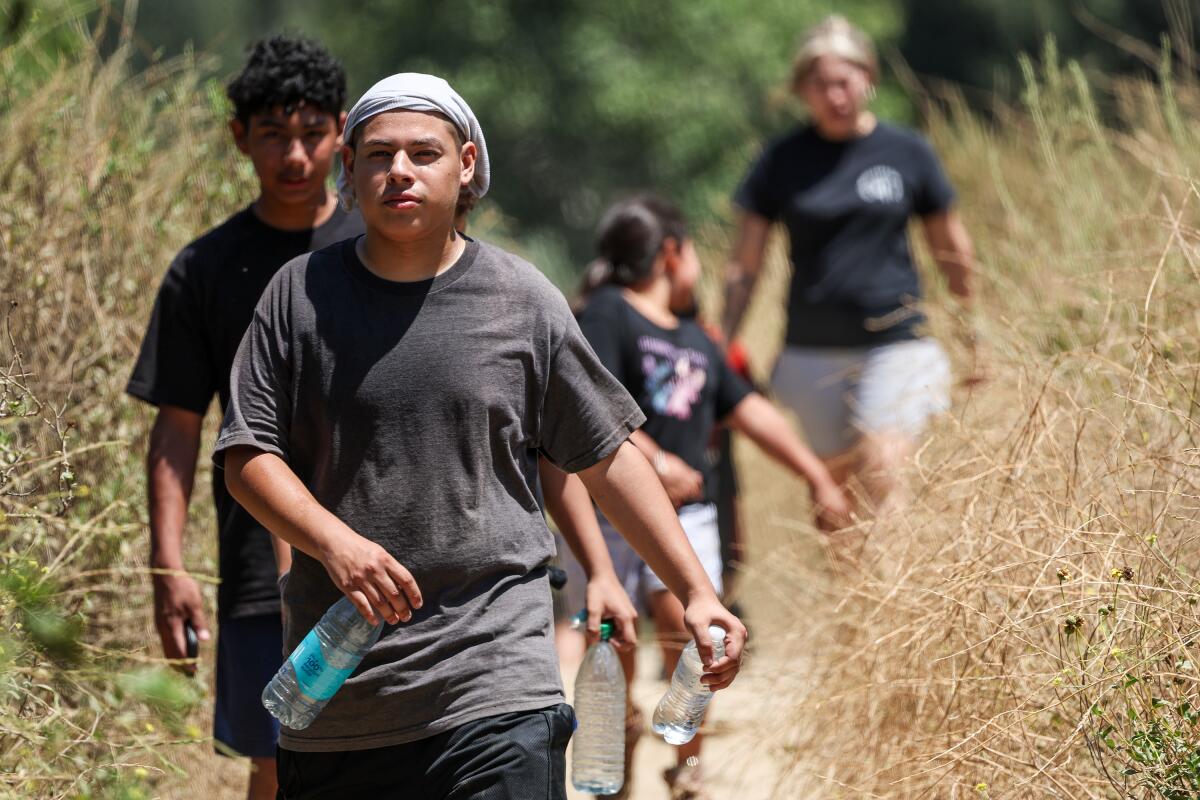
The extreme heat is being blamed for several deaths
A group of motorcyclists were riding through Death Valley National Park on Saturday, where temperatures reached 128 degrees — when several riders experienced severe heat illness. One person died at the scene and others were hospitalized.
A woman incarcerated at the Central California Women’s Facility in Chowchilla was hospitalized last week and died Saturday. A prisoner advocacy group is blaming her death on “heatstroke and neglect,” but a California Department of Corrections and Rehabilitation spokesperson told the San Francisco Chronicle that the woman appeared to have died due to “an ongoing medical condition.”
Extreme heat is also suspected to have killed four people in the area of Portland, Ore.
The heat is making wildfires harder to fight — and upping the risk for more
At least 18 fires are burning in the state, according to Cal Fire.
The largest as of Monday was the Lake fire in the Santa Barbara County mountains, which has scorched more than 20,000 acres and is 8% contained.
Weather service forecasters warn that the heat wave “will continue to bring elevated to critical fire weather conditions” and could easily fuel the growth of existing fires.
The state spotlights “unseen impacts” of extreme heat
The Times has extensively covered extreme heat’s effects in California, reporting in 2021 that the state “chronically undercounts the death toll and has failed to address the growing threat of heat-related illness and death.”
The California Department of Insurance released a report last week analyzing seven major heat events in regions across the state between 2013 and 2022, in an effort to better understand the effects that extreme heat brings, especially on the most vulnerable communities.
It estimated that the total insured and uninsured cost of those events — including costs related to health and safety, economic activity, infrastructure and energy — was $7.7 billion. Researchers noted that nearly 460 people died from heat-related causes during those seven events. Thousands more were hospitalized or treated in emergency rooms and urgent care facilities.
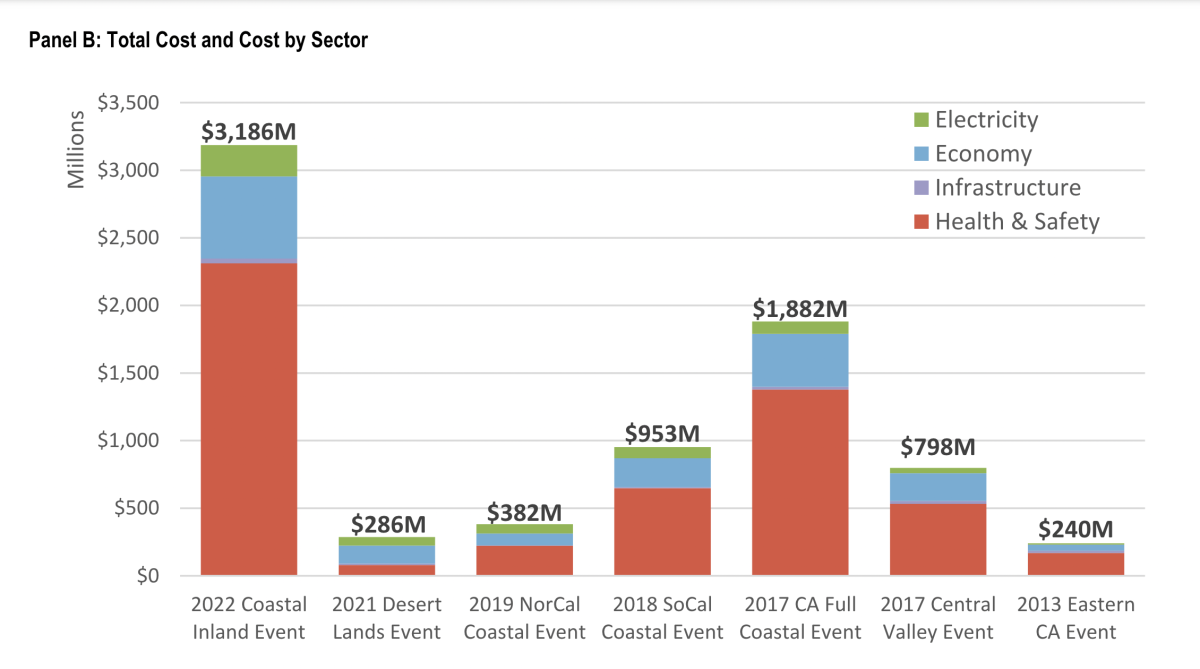
The study also linked extreme heat to hundreds of millions of dollars in lost labor productivity, losses caused by power outages, as well as damages and delays due to infrastructure failures — mostly roads and rail lines that fail in the heat.
The new study also supports existing research on the racial and economic disparities of extreme heat.
“Black, Native American, and White Hispanic estimated mortality rates from extreme heat are higher than for Asian and White Non-Hispanic populations,” the study states. “In some cases, the rates for overburdened groups are twice as high as for Asian and White Non-Hispanic groups.”
The study’s authors note that the full costs of extreme heat are much higher and “cannot be quantified or fully estimated.”
The analysis “underscores the urgency of California’s efforts to create a groundbreaking heat wave ranking and early warning system,” Insurance Commissioner Ricardo Lara wrote in the report. “It’s a call for comprehensive strategies to address the previously unseen impacts of extreme heat.”
That could prove difficult, as Gov. Gavin Newsom recently signed a state budget that cut more than $107 million in funding for heat resiliency and other climate-related programs. Voters could decide in November to restore some of those dollars via Proposition 4, a climate bond, which would borrow $10 billion to fund climate and environmental projects — including heat resiliency work.
Scientists say human-caused climate change is contributing to more frequent extreme weather events around the world, which Californians have experienced plenty of in recent years. Experts project that our wet and dry seasons will only get more intense as the planet continues to heat up. That means more intense storms, worse flooding and more dangerous heat — along with all the threats to health and infrastructure those bring.
Today’s top stories
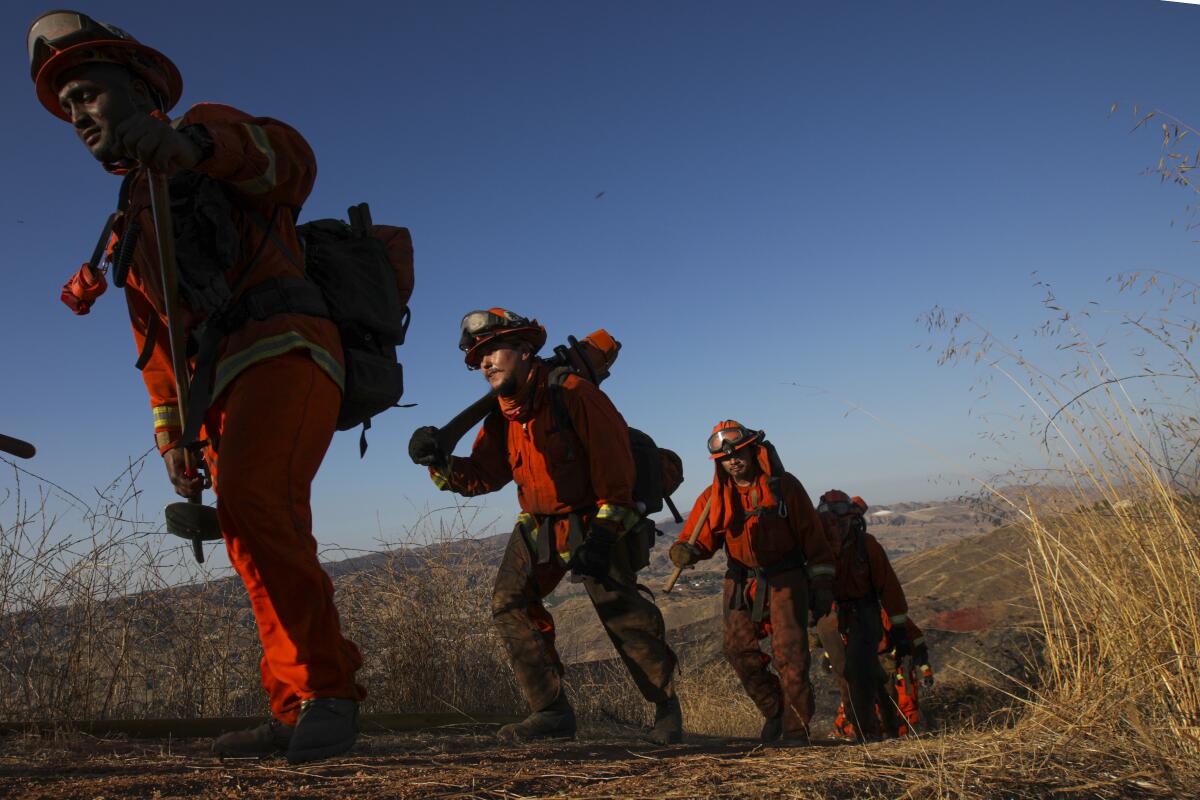
California fires
- California’s inmate firefighter crews are dwindling just as the state starts to burn.
- California’s wildfires trigger evacuations and threaten homes amid heat wave.
- 19,000-acre wildfire in Santa Barbara County prompts evacuations near vineyards, Neverland Ranch.
- Intense heat wave brings new California fires; Palm Springs breaks all-time heat record.
Politics
- Angry Biden: ‘Go ahead. Challenge me at the convention.’
- Steve Garvey has been quiet since the March primary. So what was he doing in Israel?
Hollywood
- David Ellison’s goal for Paramount: Make it a ‘media and technology’ company.
- David Ellison is taking control of Paramount. Now the real work begins.
- With Skydance merger, Paramount Pictures begins an uncertain new chapter in its storied history.
- Alec Baldwin is on trial for ‘Rust’ shooting: How did we get here?
More big stories
- ‘Playing COVID roulette’: Some infected by FLiRT variants report their most unpleasant symptoms yet.
- Mounjaro bests Ozempic for weight loss in first head-to-head comparison of real-world use.
- Meet the Californians serving in the first class of the American Climate Corps.
- Paul George ‘never wanted to leave’ Clippers, but says initial offer was disrespectful.
- A group of missing hikers near the Royal fire in Tahoe National Forest has been found.
- TSA screened more than half a million people at LAX during Fourth of July week.
- United Airlines plane loses a tire after takeoff at LAX, the second time in four months.
- Alice Munro’s daughter reveals sexual abuse by stepfather, says mother stayed silent.
- Danny Trejo says race was a factor in Fourth of July brawl launched by a water balloon.
- Are you in an age-gap friendship? Tell us your story.
- Tell us: What’s your favorite L.A. hike?
Get unlimited access to the Los Angeles Times. Subscribe here.
Commentary and opinions
- Editorial: This record-breaking heat is an emergency. It’s time to treat it like one.
- Dylan Hernández: Why haven’t the Dodgers rewarded Dave Roberts with a new contract?
- Steve Lopez: Here’s why Biden should get tested and the results made public.
- Jonah Goldberg: What too many Republicans still don’t understand about Donald Trump’s agenda.
- LZ Granderson: Bronny James is seeing the downside of being a nepo baby.
- Anita Chabria: Trump is right. The elites are out of touch.
Today’s great reads

How Beverly Hills became an unlikely battleground for the future of abortion rights. The campaign by an antiabortion group to block the opening of a specialized clinic in Beverly Hills may offer a playbook for similar efforts in other cities and states.
Other great reads
- After an 89-year-old mom was pushed out of her apartment, her daughter adds accessible ADU.
- Students scoff at a school cellphone ban. Until they really begin to think about it.
How can we make this newsletter more useful? Send comments to [email protected].
For your downtime
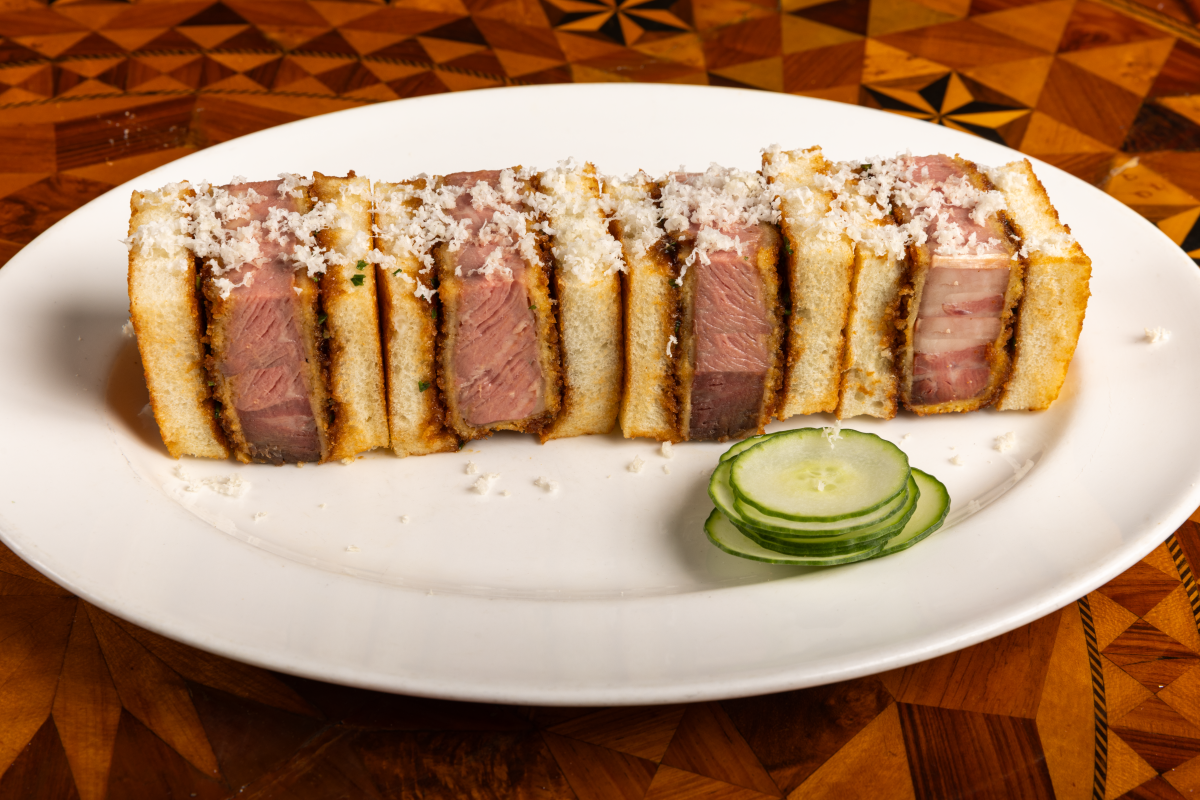
Going out
- 🥩 More people should be eating steak sandwiches at this bar.
- 🍨 At this new Turkish ice cream shop in Long Beach, the show stars rare dondurma.
- 🎭 See Edinburgh Fringe without leaving L.A.: Where local comics are testing their festival acts.
Staying in
- 📚From ‘Bridgerton’ to ‘Ripley,’ Netflix’s latest hit adaptations have also boosted book sales.
- 🧑🍳 Here’s a recipe for breakfast berry summer pudding.
- ✏️ Get our free daily crossword puzzle, sudoku, word search and arcade games.
And finally ... a great photo
Show us your favorite place in California! We’re running low on submissions. Send us photos that scream California and we may feature them in an edition of Essential California.
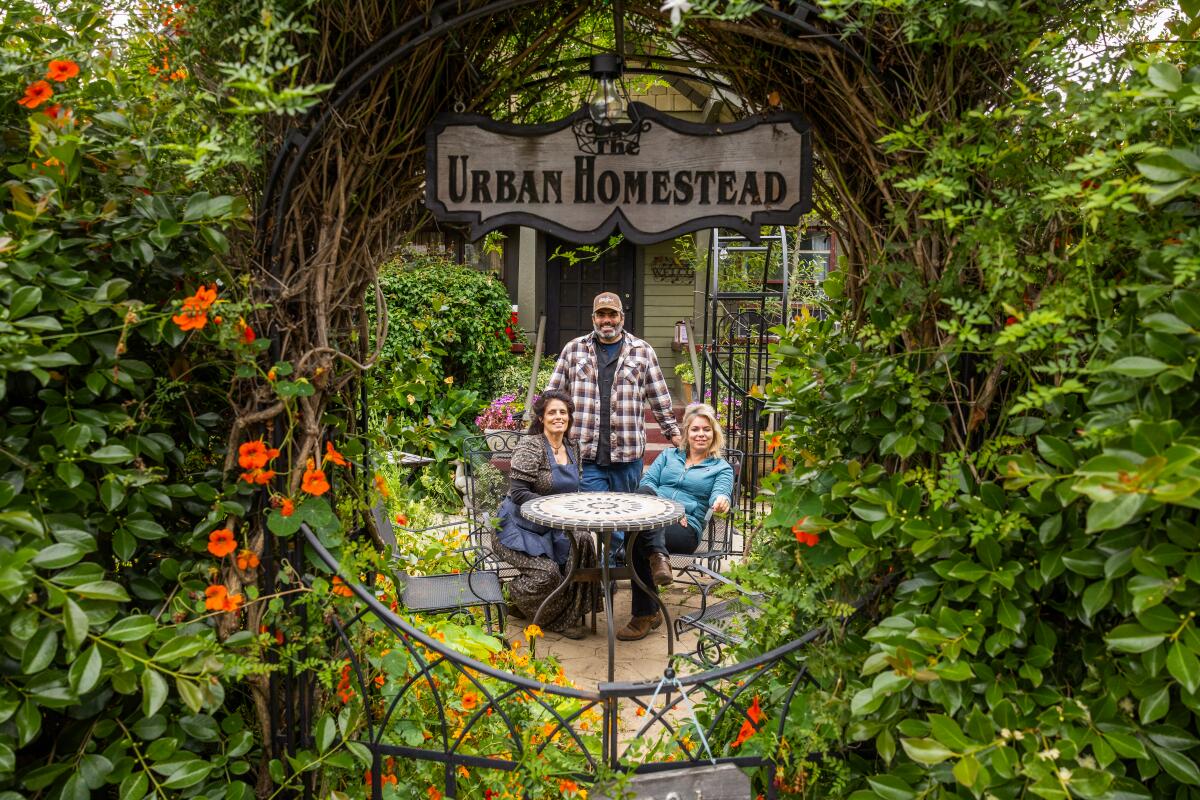
Today’s great photo is from Times photographer Myung J. Chun from the organic Urban Homestead of Jules Dervaes Jr., whose children still farm the land 50 years later.
Have a great day, from the Essential California team
Ryan Fonseca, reporter
Kevinisha Walker, multiplatform editor and Saturday reporter
Christian Orozco, assistant editor
Stephanie Chavez, deputy metro editor
Check our top stories, topics and the latest articles on latimes.com.
Sign up for Essential California
The most important California stories and recommendations in your inbox every morning.
You may occasionally receive promotional content from the Los Angeles Times.




